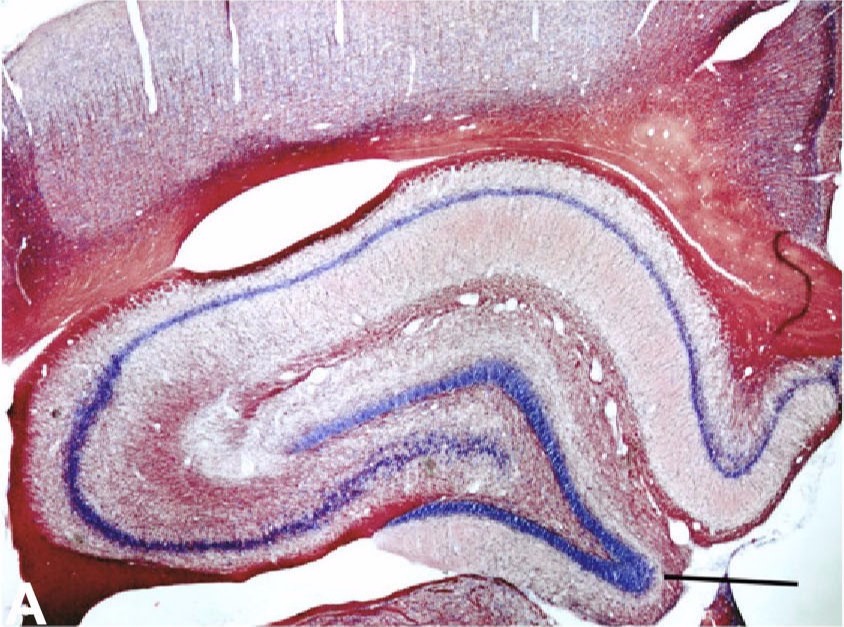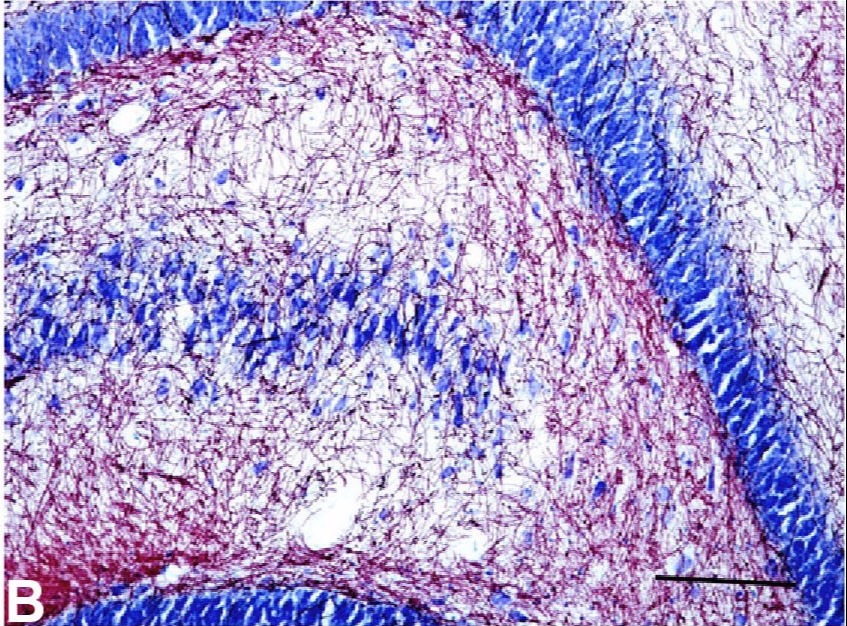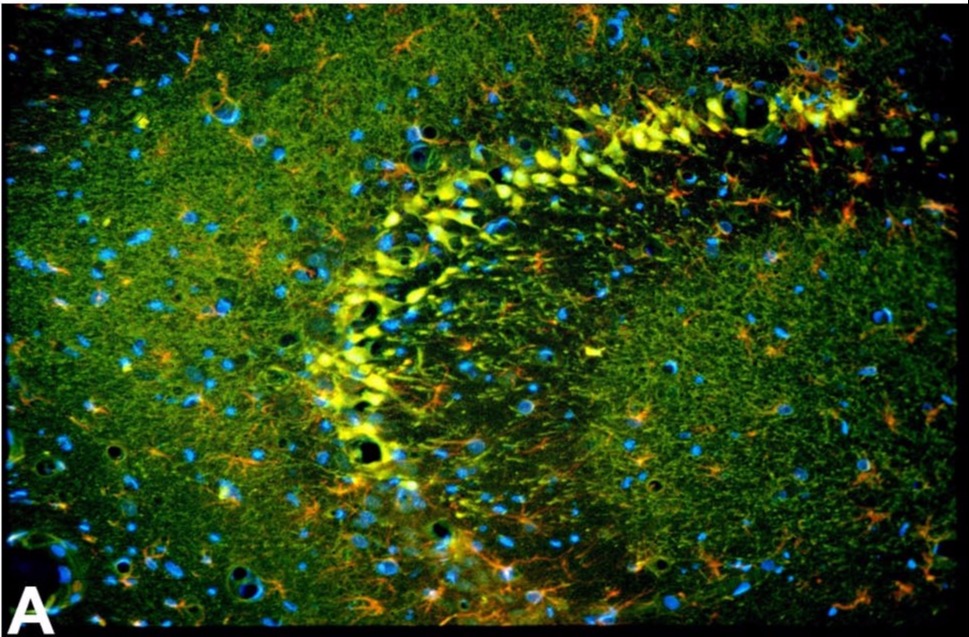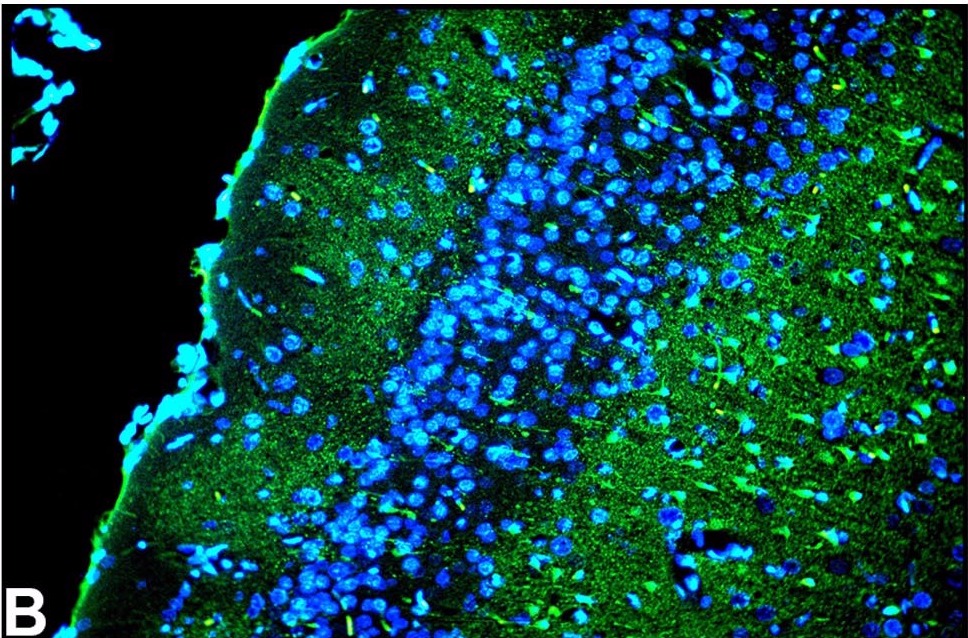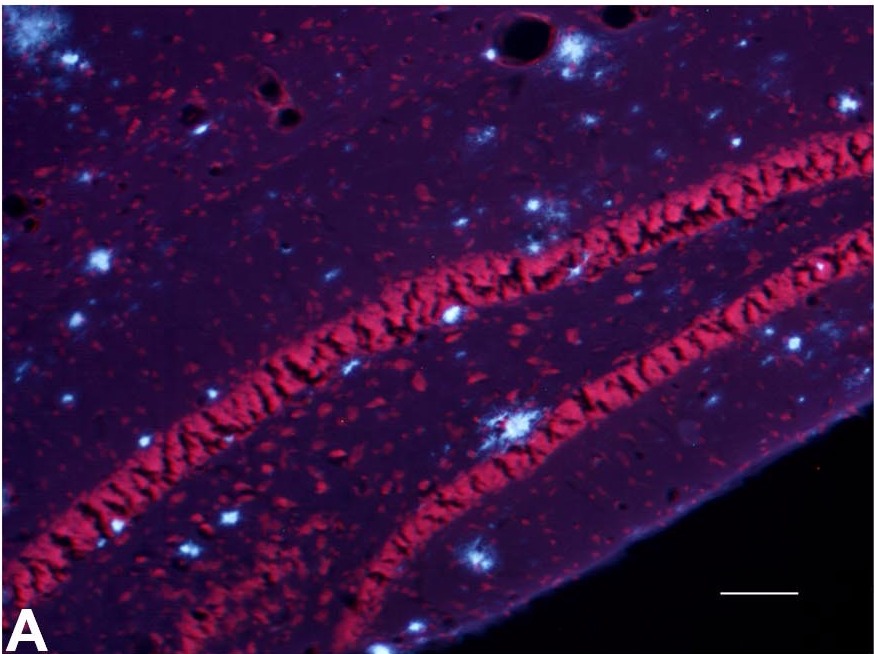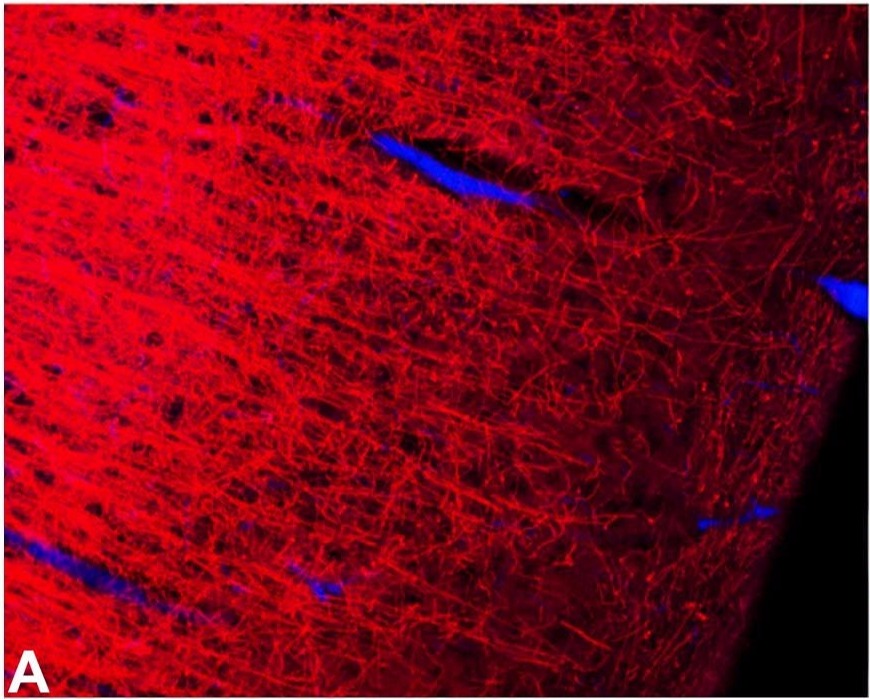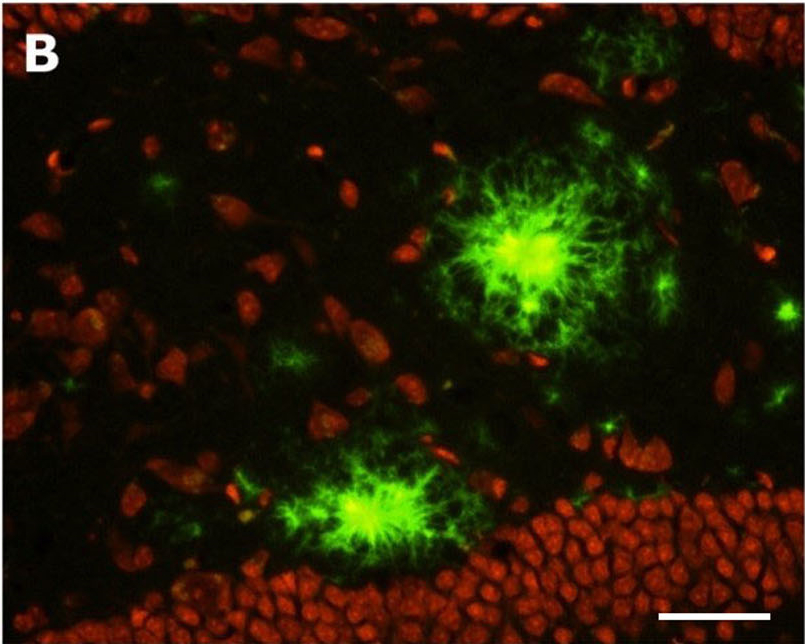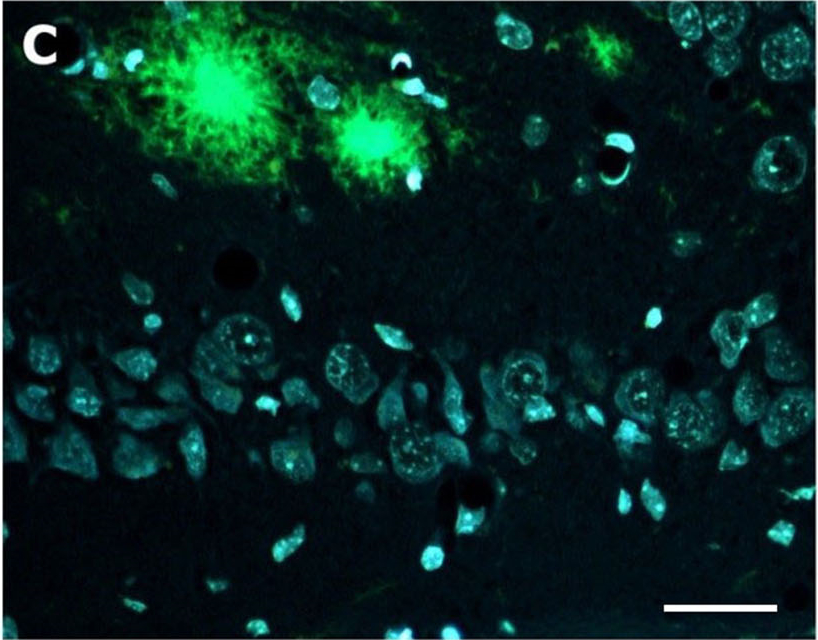The combination of more than one histochemical tracer can be very informative and numerous multiple labeling combinations of the aforementioned tracers are possible, as the following examples illustrate:
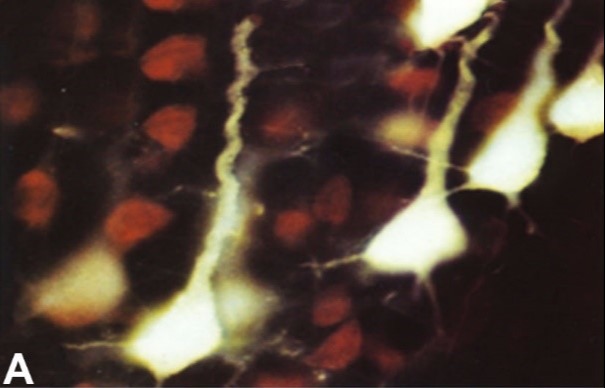
Multiple Labeling with fluorescent axonal tract tracers
A. Fluoro-Gold labeling of layer V sensory motor neurons with projections to the ventral horn of the spinal cord appear light yellow, while adjacent neurons lacking such projections appear red following counterstaining with ethidium bromide.
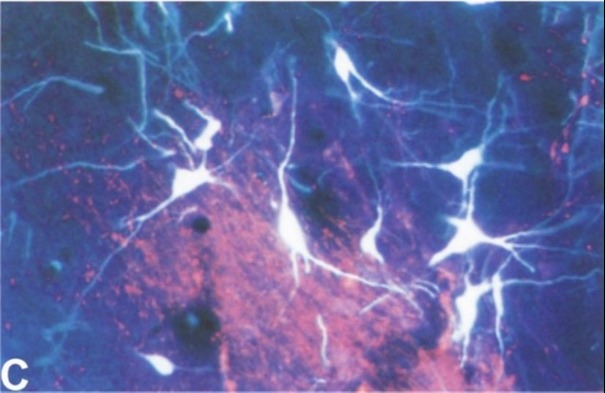
C. Simultaneous injection of the retrograde axonal track tracer Fluoro-Gold into the ventral striatum and the anterograde tract tracer Fluoro-Ruby injected into the nucleus accumbens results in Fluoro-Gold labeled cells in the pars compacta and Fluoro-Ruby labeled terminals in the pars reticulatta regions of the substantia nigra.
